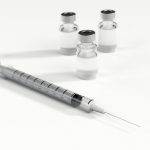
A World Health Organization (WHO) advisory group, that met in Geneva to assess strains to include in the Southern Hemisphere’s 2020 flu vaccines, recommended swapping out the H3N2 component and one that covers the influenza B Victoria lineage.
The new H3N2 component is A/South Australia/34/2019, which replaces A/Kansas/14/2017— the group’s delayed pick for the Northern Hemisphere’s upcoming flu season. The newly recommended H3N2 strain is also a change from the one included in this season’s Southern Hemisphere vaccine, which was A/Switzerland/8060/2017.
Also, the new influenza B Victoria lineage strain is B/Washington/02/2019, which bumps out B/Colorado/06/2017, the one the experts recommended for last season’s Northern Hemisphere vaccines and this season’s Southern Hemisphere vaccine.
The group’s pick for the 2009 H1N1 strain is the same as this season’s Northern Hemisphere vaccine, but is different than the one included in the current Southern Hemisphere vaccine, which is A/Michigan/45/2015.
The WHO recommends the following for the Southern Hemisphere vaccines:
- For H1N1, an A/Brisbane/02/2018-like virus
- For H3N2, an A/South Australia/34/2019-like virus
- For B Victoria, a B/Washington/02/2019-like virus
- For Yamagata, a B/Phuket/3073/2013-like virus
For egg-based trivalent versions that have only one B strain, the experts recommended including the Victoria lineage vaccine virus (B/Washington/02/2019).
Overall pattern shows little flu B activity
When the advisors looked at flu patterns between February and September, they noted that influenza A viruses predominated in most countries, with cocirculation of 2009 H1N1 and H3N2 seen in all countries.
Influenza B, however, circulated in higher proportions in Southeast Asia and in some countries in the southern cone of South America, such as Chile. The Victoria lineage was predominant in most global regions, except South America, which saw more Yamagata lineage viruses.
Increasing proportions of H3N2 subclade
In March, when the experts announced their delayed H3N2 pick, they said they were watching increased numbers of genetically and antigenically diverse strains, with the number of 3C.3a viruses rising in several geographic regions. In their report today, they said there’s a significant increase in the proportion of viruses within the 3C.2a1b subclade.
Tests using ferret sera and human serology studies found that the A/South Australia/34/2019 vaccine strain offered better protection than the strains included in the current Southern Hemisphere vaccine and the latest version of the Northern Hemisphere vaccine.
The vaccine advisory group meets twice a year to recommend influenza vaccine viruses, in February to select ones for the next Northern Hemisphere flu season and in September to pick strains to include in Southern Hemisphere vaccines that will be offered for its next season.
During their meetings, the experts also review the latest information on zoonic flu viruses and recommend new candidate vaccine viruses for pandemic preparedness, if needed. The WHO said the group’s zoonotic flu summary from the meeting will be available shortly and will appear on the agency’s website.
Source: CIDRAP

















